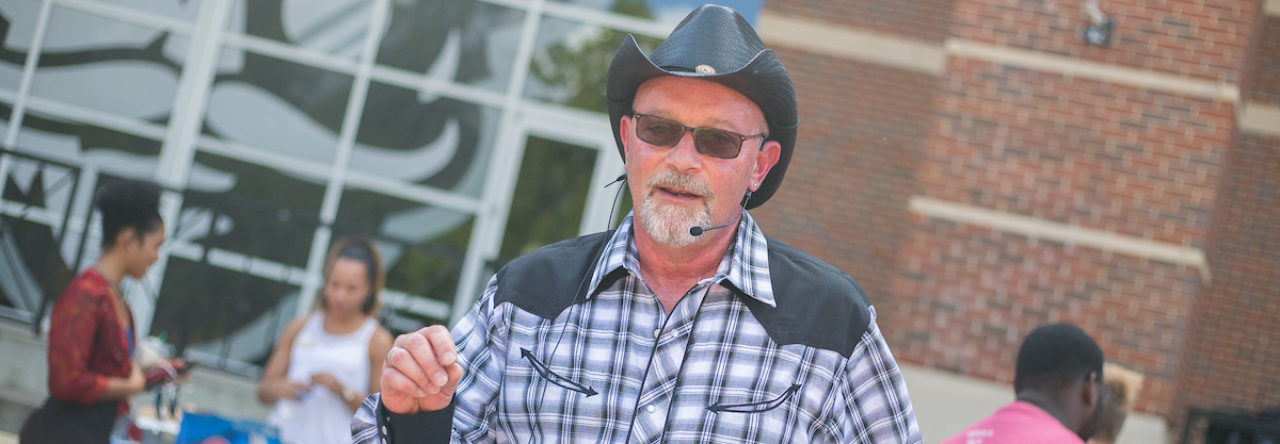By Daisy Saunders |
When it comes to fitness and cardiovascular activities, dancing is often overlooked and underrated. The beautiful thing about many of the dance styles, types, or genres is this: you don’t need a partner. You only need yourself and the proper footwear.
Mary, for example, has always loved to dance. She can’t remember a time when she didn’t want to dance. Or, sway to the sound of music. While she saw it as dancing, others just saw her moving and “bopping” – without much rhythm or style – to the beat of music; a beat she heard in her head which oftentimes was not the beat others heard. In middle school, her band teacher told her that “she had no rhythm”. In high school and college, she drew snickers when she found herself on the dance floor – oblivious to people around her – just moving to her own beat. Back in the day, when attending a school dance or party, guys would come up and ask you to dance. Rarely, was she approached for a dance. Though shy, her love of dancing allowed her to become comfortable dancing with and by herself. Her best friend, who was considered a “good” dancer (and was always asked for a dance), said she looked like a chicken on the dance floor. That was long before the funky chicken dance became popular.
Fast forward, 40 plus years later, Mary is still swaying or moving to the sound of music. Often, in the privacy of her own home. It’s her primary form of exercise. Upon meeting her, I immediately noticed her strength, muscle tone, and agility (for a person in her late sixties) and concluded that she had a strict fitness regimen; perhaps, even a personal trainer. When I inquired, she informed me that she watches her diet and dances three or four times a week; sometimes alone – in the privacy of her own home; other times, she goes out. Always, though, she dances by herself, without a partner. She stated that she has always loved moving to music; and from early childhood -no matter her schedule – found time to “sway” to music even if she could only get in 15 or 20 minutes. Although Mary enjoys many genres, her favorite is reggae. She stated that reggae allows her to “sway” anytime and anywhere.
Dancing is considered a recreational activity and all too often overlooked and undervalued for the positive impact it can have on one’s mental and physical health, especially among active older adults and people with mobility challenges. Regardless of the dance style, type or genre that interest you (and there are many ranging from ballroom and tap to reggae and hip hop), there are numerous physical, mental, and social benefits. No matter your age and physical limitations, there are many reasons to dance. Here are my top three:
• FUN! When you relax and let yourself go, you realize that dancing is fun. The music, rhythm, movements – even when you miss a few or many steps – gives you a satisfying experience. For example, some dance genres, like Zumba® (a Latin-inspired, cardio-based, dance-fitness program), creates a party-like atmosphere that is exhilarating, easy to follow, and is great for the mind, body and soul. For me, the fun factor is magnified when the playlist includes some of my personal favorites.
• HEALTH AND FITNESS. Regardless of style, type or genre, dancing provides an opportunity to get a total body workout. The number of calories burned in an hour varies – depending on body weight and the intensity of the dance routine. However, at moderate to high intensity, dancing can burn roughly 200 calories per hour. It works major muscles and gives you a good cardiovascular workout. Dancing improves muscle tone, strength, endurance, flexibility, and agility. It increases range of motion and allows joints to move more freely.
• SOCIAL INTERACTION. Not only is dance an exhilarating form of exercise, it provides an opportunity to increase your social interactions with like-minded people in a fun, non-judgmental, and safe environment. It gives you a chance to increase your social connections while learning some new and exciting skills. Many lasting friendships and relationships started on the dance floor.
It’s never too late to start dancing. You don’t have to have rhythm or be able to jump, bend, or kneel. You don’t have to be good (whatever your definition of good). All you have to do is “show up and move” – whether your move is marching in place, waving your arms or swaying from side-to-side. You can even sit in your chair. It doesn’t matter whether you are standing or sitting, just move. Your body, mind and soul will thank you -now and in the future.
Daisy Saunders writes and speaks on positive/healthy aging and personal empowerment. She also teaches Zumba® Gold (a dance fitness program that combines Latin and international music with dance moves) to older active adults and people with mobility challenges.
Daisy is the author of ZEAP… 50 Nuggets for Navigating the Second Half of Life and Big Eyes™… Big Eyedeas for Achieving Optimum success in Business and in Life. Contact her at: http://www.daisysaunders.com.Article Source: https://EzineArticles.com/expert/Daisy_Saunders/1088852
article provided on behalf of http://www.linedancingnews.com
